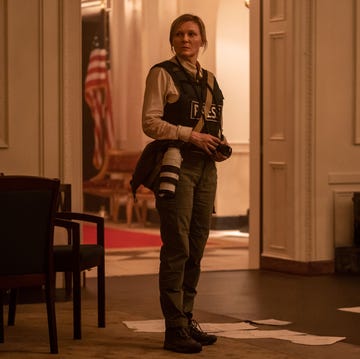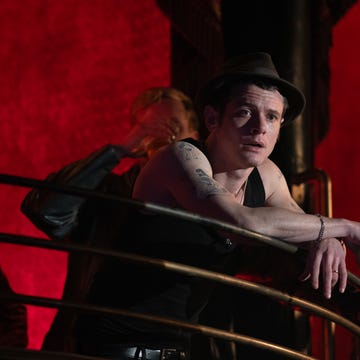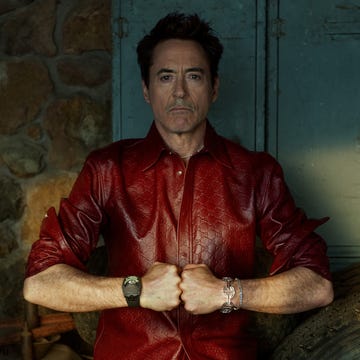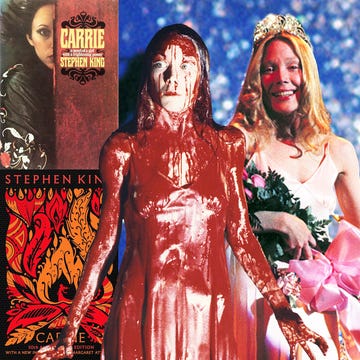Okay, hear me out on this one. Spider-Man: Homecoming was great—the best Marvel movie in years, in fact. But maybe it could have been better if Spidey got his own damn movie.
There's no doubt that Spider-Man is one of Marvel's most powerful legacy brands, a character who has anchored six movies with three different stars in the last 15 years. Yet, in his first stand-alone film within the Marvel Cinematic Universe, he's nearly co-starring with Robert Downey Jr.'s overwhelming, dickish Tony Stark.
Spider-Man: Homecoming takes place shortly after the events in Captain America: Civil War, in which a young Peter Parker is recruited by Stark to help fight in a big, CGI superhero clusterfuck. He battles alongside the most famous heroes in the world, then returns to his Queens high school and skips his extracurricular activities to catch bike thieves and give old women directions as the Friendly Neighbourhood Spider-Man. He's just a regular angsty teen, anxious to grow up and do something more important—except, for him, that means fighting extra-dimensional monsters rather than going to college. And this is where the movie becomes more like The Breakfast Club than any Marvel movie: Peter sits in detention, goes to parties, crushes on the popular girl, and is awkward as hell alongside his best friend Ned (played by the hilarious Jacob Batalon). Tom Holland might be the best Peter Parker of the live-action Spider-Man era; he's sweet, he's young, and he finds the perfect balance of irreverence and intelligence that has always defined the character.
Since we've had so many Spider-Men in the last 15 years, director Jon Watts brilliantly avoids another origin story. We already know Parker is Spider-Man—we've seen that infamous spider bite and all that. Homecoming, in contrast to the first five Spider-Man movies, brilliantly depicts a superhero weighed down by the awkwardness of adolescence. The film is at its best when Parker is put in uncomfortable high school moments—like his first party, which he has to leave early to go fight crime, finding himself in a bit of a pickle when there are no buildings to swing from in the suburbs. There's another scene in the halls of the high school when Ned, who has just learned Parker is Spider-Man, is curious about his powers. ("Can you lay eggs?" Ned asks—which is honestly a valid question after learning your best friend's DNA has been spliced with a spider's.)
But while he's stopping petty thieves, he wants something more: to join the Avengers, the big leagues, of which he's only had a taste. And this is a perfect goal for a character in high school, as Parker repeatedly texts his Avengers contact, Happy, trying to get in touch with Tony Stark like an obsessed boyfriend. Along the way, Parker stumbles across a bigger villain to catch: Michael Keaton's Adrian Toomes, a blue collar dad who's just trying to feed his family by moonlighting as Vulture and selling alien weapons to thieves. As Spider-Man begins hunting Vulture on his own, Iron Man swoops in to derail things.
Tony Stark has engineered Spider-Man's suit—a high-tech costume equipped with drones and taser webs and a built-in Iron Man-esque interface with its own superhero Siri. The suit becomes a crutch for the narrative and Spider-Man himself. It's basically a self-driving crime-fighting suit, taking all of the wonder and skill out away from Spider-Man himself and rendering those Spidey Senses obsolete. And the banter with his onboard computer becomes the basis for much of the comedy, which is fine, even if it borders on being a little overused.
The real problem, though, is that Stark reasserts himself, jumping in to save Spider-Man in moments in which Spider-Man deserved to be the hero. This leads to a number of awkward scenes between Holland and Robert Downey Jr., with Stark inserting himself as a condescending father figure. The biggest insult is that Iron Man steals what could be Spider-Man's best moments. In previous Spider-Man movies, there's a scene when good New Yorkers step in to save their friendly neighborhood Spider-Man from peril—with the usual shot of an American flag, elevating hometown pride into full-fledged patriotism. But in a scene that sees Spider-Man saving commuters onboard the Staten Island Ferry (with the Statue of Liberty in full view in the background!), Iron Man flies in to save the day and steal the thunder. Spider-Man's feel-good New York moment is stolen from him.
Thankfully, once Spider-Man ditches Iron Man, the film and Peter Parker can breathe on their own. Homecoming once again removes itself from the Marvel cliches and gets back to its own rhythm—which leads to a final battle that is entirely rare in any superhero movie these days. The trend is to go big: usually some villain comes in to destroy absolutely everything in its past (or a collection of a dozen superheroes attempting to destroy each other, leaving an unnecessarily huge amount of collateral damage). In Homecoming's climactic battle, on the other hand, the hero and villain are easily matched, and in the sky, Spider-Man's web slinging is nearly useless. Vulture has upper hand, which makes for more of a chess match ending compared to the big, flashy, chaotic Avengers battles.
It would have been too much to ask for a single superhero in a Marvel movie. Despite the presence of Iron Man as a looming shadow over Spider-Man's heroics, Spider-Man: Homecoming endured nonetheless on charm and creativity rather than overwrought plot and cartoon violence. And the best news is: Peter Parker still has another year of high school ahead of him.














